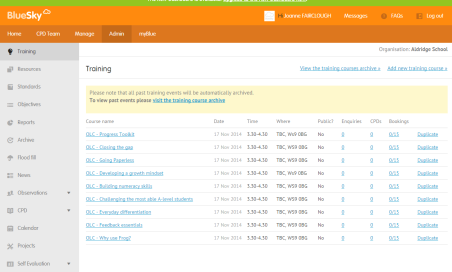by Damian Leese and Jo Fairclough
What’s our strategy to improve teaching and learning?
The aim is simple. To deliver consistently great lessons so that students receive an education that best supports their learning, progress and ultimately their future success. As John Tomsett rightly states “the best pastoral care for students from the most deprived socio-economic background is a great set of examination results.” (Tomsett, This much i know about love over fear) With this in mind it was important to route our strategy in what works and in practice that has been researched to have the highest leverage in closing the attainment gap. Within this we are looking to develop further a culture of excellence and growth amongst staff and students which rewards hard work, effort and in which mastery of content and it being applied successfully is celebrated. (Allison and Tharby, MEC) This is going to be supported by a professional development which encourages collaboration amongst colleagues in which teachers strive to improve no as Dylan Wiliam says “they are not good enough but because they can be even better” with the results being “no limit to what we can achieve”.
To a chieve this we have adopted the six principles to support great teaching and learning from the excellent book ‘Making every Lesson Count’ by Alison and Tharby. These are known as the ‘Big 6’.
chieve this we have adopted the six principles to support great teaching and learning from the excellent book ‘Making every Lesson Count’ by Alison and Tharby. These are known as the ‘Big 6’.
The rationale behind these is uncomplicated. They are clear, meaningful and grounded in research. They allow a common language for all as well as allowing for subject autonomy and flexibility, ensuring that teachers can teach according to the needs of their subjects and their own style.
How?
Having reviewed the Greenwood quality assurance process from 2016-7, we saw there was a real need to strip back, simplify the existing framework and ensure a clear, specific foci. Many of you reading this will know that research has clearly indicated the unreliable nature of lesson gradings and we were keen to find an alternative method that will help us to drive teaching and learning further.
The article https://www.sisra.com/no-grades-no-problem proved to be hugely useful in the next part of this process as it presented several ways to ‘monitor the quality of teaching and learning without applying the traditional outstanding to inadequate’. Collating this information would give us a version of the bar chart below:

We wanted to ensure the six principles underpinned our strategy and focused learning walks would be a key tool in improving the quality of teaching and learning. Learning walks will support the focus on the whole school ‘6 principles’ and staff will comment on the strengths of the lesson (shown as Yes) and comment on areas of development (not yet). The language here also supports our ‘Greenwood Growth’ philosophy.
You can click on the image to see a larger view.
More to follow!























 d a task to develop their understanding and help them achieve a higher grade in their assessment. When we came up with the diary entry idea we realised this was good task for the class to learn more about TJ’s mannerisms. Whilst setting the task, we asked the class whether they understood the success criteria and we went through this with them, so when at home they could complete it to a high standard and had no excuses.
d a task to develop their understanding and help them achieve a higher grade in their assessment. When we came up with the diary entry idea we realised this was good task for the class to learn more about TJ’s mannerisms. Whilst setting the task, we asked the class whether they understood the success criteria and we went through this with them, so when at home they could complete it to a high standard and had no excuses.
